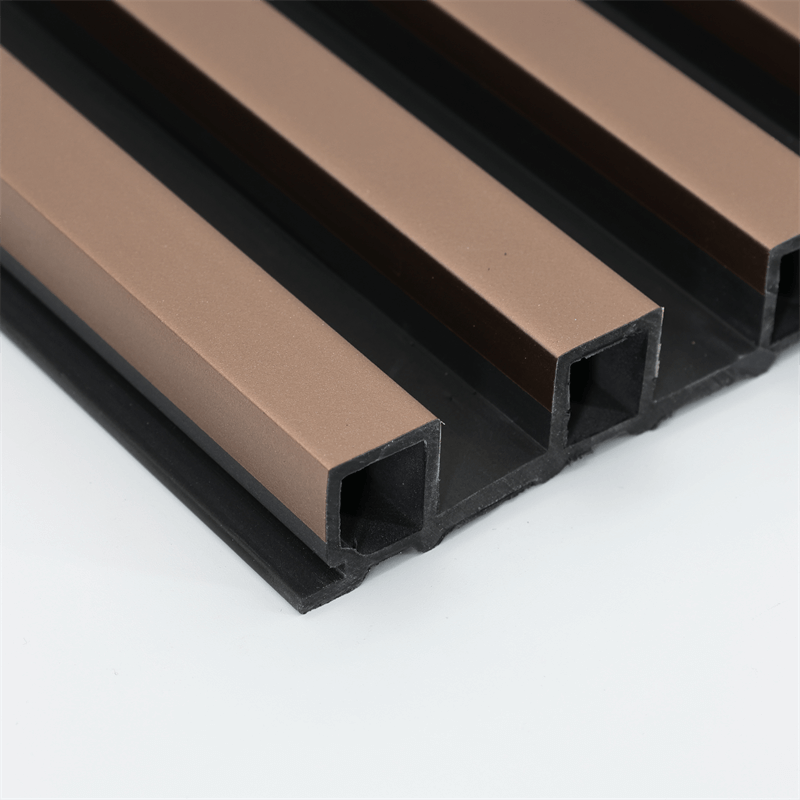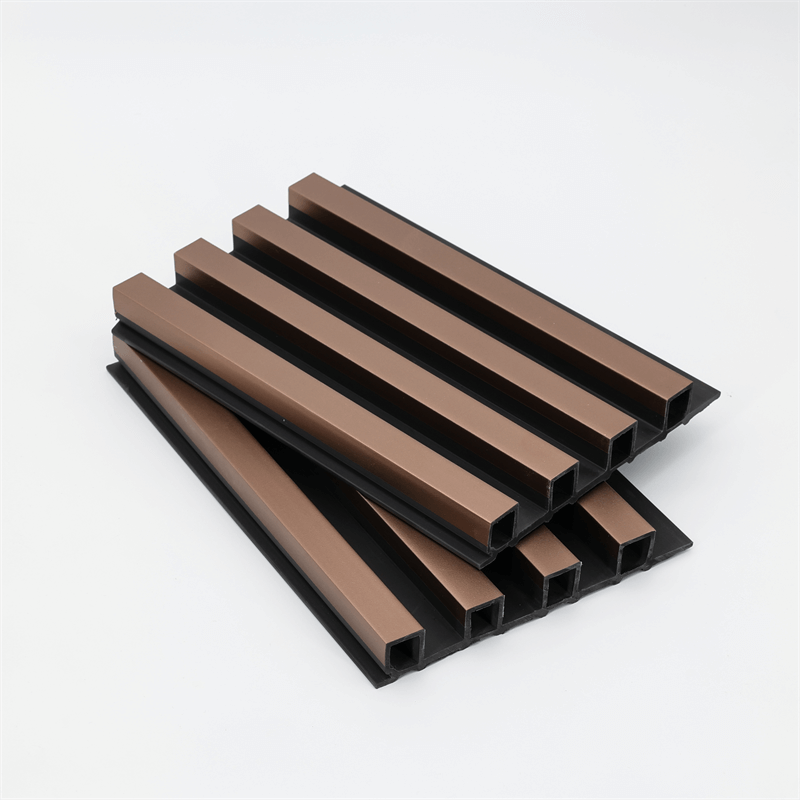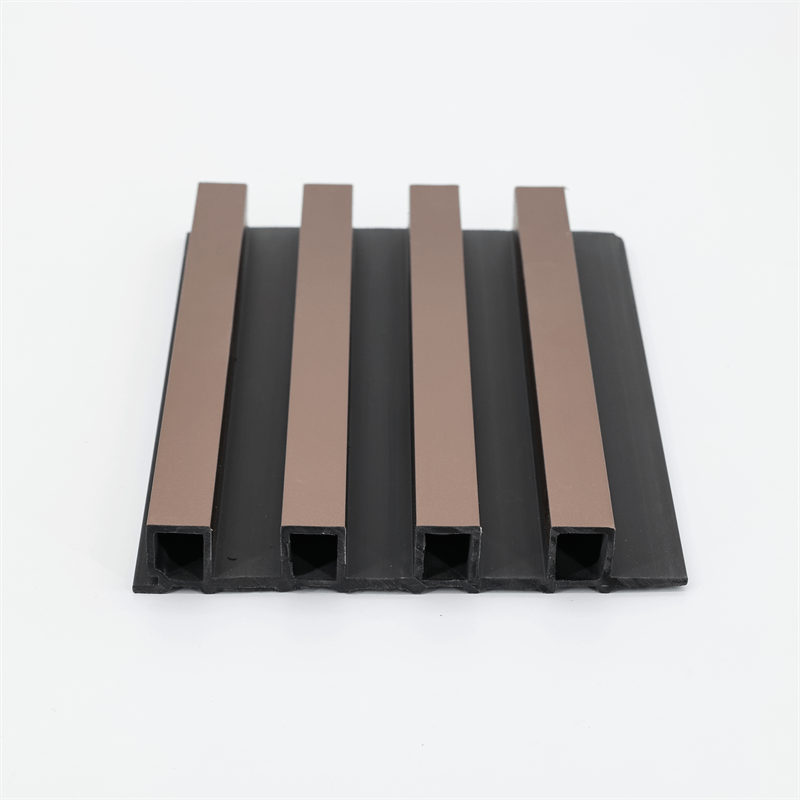Design trends are constantly evolving, and as we step into the future, sustainability and innovation take center stage.
WPC (Wood-Plastic Composite) wall panels have emerged as a revolutionary solution, blending style and sustainability in the world of interior design.
This essay explores how WPC wall panels are shaping the future of design, focusing on their eco-friendly attributes, technological advancements, design versatility, and contribution to a more sustainable built environment.
I. Embracing Eco-Friendly Design with WPC Wall Panels
- Sustainable Material Composition: WPC wall panels are crafted using a blend of wood fibers or flour and thermoplastics. This composition reduces reliance on traditional materials and promotes sustainable forestry practices. By choosing WPC panels, designers and homeowners actively participate in creating a more environmentally friendly design landscape.
- Low Carbon Footprint: The production of WPC wall panels results in a significantly lower carbon footprint compared to traditional materials like concrete or steel. The manufacturing process of WPC panels consumes less energy and emits fewer greenhouse gases, making them a greener alternative that contributes to climate change mitigation.
- Recyclability and Reduced Waste: WPC wall panels are designed to be recyclable at the end of their life cycle. They can be reprocessed into new panels or other plastic products, reducing waste generation and promoting a circular economy. By incorporating WPC panels, designers and homeowners contribute to the reduction of landfill waste and the efficient use of resources.
II. Technological Advancements and Innovation in WPC Wall Panels
- Enhanced Durability: Technological advancements have resulted in the development of WPC panels with increased strength and durability. These panels are resistant to impact, scratches, and fading, ensuring they maintain their aesthetic appeal over time. The improved durability of WPC panels offers longevity and reduces the need for frequent replacements, resulting in less waste generation.
- Advanced Manufacturing Techniques: State-of-the-art manufacturing techniques have further refined the production of WPC wall panels. Precision engineering allows for consistent panel dimensions, ensuring ease of installation and creating seamless, visually appealing surfaces. These advancements enable designers to achieve flawless designs with minimal effort.
- Surface Treatments and Finishes: Technological innovations have expanded the possibilities for surface treatments and finishes on WPC wall panels. Manufacturers can apply protective coatings, textures, and finishes that mimic the natural appearance of wood or other materials. This versatility opens up a world of design possibilities, allowing designers to achieve the desired aesthetic while embracing sustainable materials.
III. Design Versatility and Creative Freedom
- Aesthetic Appeal: WPC wall panels offer a wide range of design options, allowing designers to create visually stunning interiors. These panels can be customized to mimic various materials, including wood, stone, or even metallic finishes, providing a diverse range of textures, colors, and patterns. With WPC panels, designers can achieve the desired aesthetic without compromising on sustainability.
- Flexibility in Application: WPC wall panels are highly versatile and can be used in a variety of spaces. They can be applied to entire walls, used as accent features, or incorporated into creative designs such as geometric patterns or 3D installations. The flexibility of WPC panels allows designers to unleash their creativity and bring unique design concepts to life.
- Compatibility with Other Materials: WPC wall panels seamlessly integrate with other materials, allowing designers to combine different elements to create visually captivating interiors. Whether paired with glass, metal, or natural stone, WPC panels complement and enhance the overall design concept, adding depth and texture to the space.
IV. Contributing to a Sustainable Built Environment
- Reduced Resource Consumption: By choosing WPC wall panels, designers and homeowners actively contribute to the conservation of natural resources. The use of wood fibers from sustainably managed forests and the reduced reliance on traditional materials help preserve forests and minimize the extraction of non-renewable resources.
- Energy Efficiency: WPC wall panels contribute to energy efficiency within buildings. The insulation properties of these panels help maintain consistent indoor temperatures, reducing the reliance on heating and cooling systems. This results in lower energy consumption and decreased environmental impact.
- Improved Indoor Air Quality: WPC wall panels are free from toxic chemicals and pollutants, ensuring a healthier indoor environment. These panels do not emit volatile organic compounds (VOCs), contributing to better indoor air quality and promoting occupant well-being.

As we step into the future of design, WPC wall panels emerge as a sustainable and innovative solution.
Their eco-friendly attributes, technological advancements, design versatility, and contribution to a sustainable built environment make them a favored choice among designers and homeowners.
By embracing WPC panels, we not only create visually stunning interiors but also contribute to a more sustainable and eco-conscious world.
These panels represent the fusion of style and sustainability, enabling us to design with a conscience and shape a brighter future for the design industry.
In conclusion, WPC wall panels offer a pathway to a future of design that is both sustainable and visually captivating.
By embracing these panels, designers and homeowners can actively contribute to the preservation of our environment while creating beautiful spaces.
The eco-friendly attributes of WPC panels, such as their sustainable material composition, low carbon footprint, and recyclability, make them a responsible choice for the environmentally conscious.
Technological advancements in manufacturing techniques and surface treatments have further elevated the capabilities of WPC wall panels, ensuring their durability, precision, and aesthetic appeal. Designers have the freedom to explore various textures, colors, and patterns, allowing for endless creativity and customization.
The versatility of WPC panels enables seamless integration with other materials, opening up a realm of design possibilities.
Beyond aesthetics, WPC wall panels also contribute to a sustainable built environment by reducing resource consumption and improving energy efficiency.
With their insulation properties and non-toxic composition, these panels enhance indoor air quality and promote healthier living spaces.
As the demand for sustainable design continues to grow, WPC wall panels stand as a beacon of innovation and responsible design choices.
By embracing them, we can step into a future where style and sustainability go hand in hand, creating spaces that are not only visually stunning but also environmentally conscious.
Let us embrace the possibilities offered by WPC wall panels and embark on a journey towards a more sustainable and aesthetically pleasing world of design.


